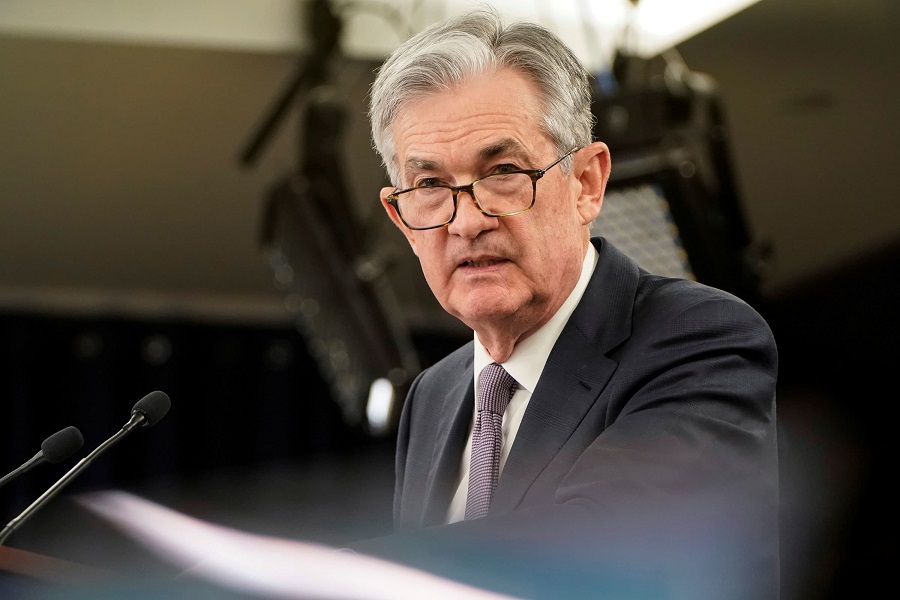“Home stretch” for the end of the tightening cycle
Central banks are thought to be in the home stretch when it comes to policy tightening.

The Fed widely tipped to lift interest rates 25-bps this week.
>> Will the Fed hike rates at least once more?
Two of those banks; the Fed and the ECB announce their latest decisions this week. The prospect of an end to rate hikes and the start of cuts next year, at least by the Fed, seems to have played an important part in keeping asset prices strong this year.
The Fed and ECB are both widely tipped to lift interest rates 25-bps this week. Market pricing suggests that this will be the last hike from the Fed while the ECB just might follow up with a final 25-bps hike before the end of the year. As for subsequent cuts, the market is more reticent to price too much into the euro curve, at last for next year, but is full-on with more than 100-bps of Fed rate cuts in 2024 that are tipped to start about a year from today.
It is worth noting that this “home stretch” for the end of the tightening cycle has itself already been stretched out as it was not too long ago that the market assumed the rate peak had already been reached and that cuts could start before the end of 2023.
Mr. Steve Barrow, Head of Standard Bank G10 Strategy had always disagreed with the idea of rate cuts this year, as it seemed, did most economists. Slow progress on reducing the stickier parts of inflation, such as core services, and the persistent tightness of the labour market are the two factors that have helped push rate-cut expectations out into next year. But as it stands, the market is still forecasting rate cuts before inflation reaches its target.
However, so too are the FOMC members as the median forecasts for PCE prices and core PCE prices next year lie above 2% at the same time as their median estimate for the fed funds target falls 100-bps next year from the assumed level at the end of 2023.
In other words, Fed members do not see themselves as “inflation nutters” (to quote former Bank of England Governor King), by wanting to keep the squeeze on policy right through until inflation comes back to target. A key question for this week is whether the Fed will give any kind of hint, either through its policy statement or Fed Chair Powell’s press conference, that rate hikes are probably over. The answer seems likely to be ‘no’ but that should not be a surprise, after all the median FOMC forecast for this year is that there will be another one after Wednesday’s (likely) hike.
That might seem a setback but, in Mr. Steve Barrow’s view, the market has been taking its cue from the data, not from the Fed’s actions or comments. If inflation continues to ease, the market will persist in its call for no more rate hikes after this week whatever FOMC members have as their median fed funds forecast for this year. But is inflation likely to moderate?
>> Will the US dollar move by the end of the FED’s tightening cycle?
On the plus side for lower inflation, we know that the further we go forward the more the evidence of declining rents in the market will filter into the CPI and PCE data. But on the flipside, at least as far as headline inflation is concerned, recent increases in many commodity prices will act as a counterweight.
On balance, it still seems likely that inflation will ease but the chances of seeing core PCE inflation, which currently stands at 4.6%, under 4% by the end of the year hinges on average monthly increases being slightly below 0.3% and that compares to the 0.4% average that we have seen so far this year. In short, the inflation rates that matter to the Fed are unlikely to collapse.
The ECB is another central bank that seems to be coming into the home stretch but here the home stretch could be quite elongated compared to the Fed as a relatively rapid switch from tightening to easing seems unlikely. Progress on reducing inflation has been harder and there are still numerous risks that could push prices back up again, not least a renewed surge in gas prices resulting from continued supply issues and the possibility of a harsher winter in Europe than last year. Hence Mr. Steve Barrow does not think that it is one-and-done for the ECB in terms of rate hikes from here, but he does when it comes to the Fed.








